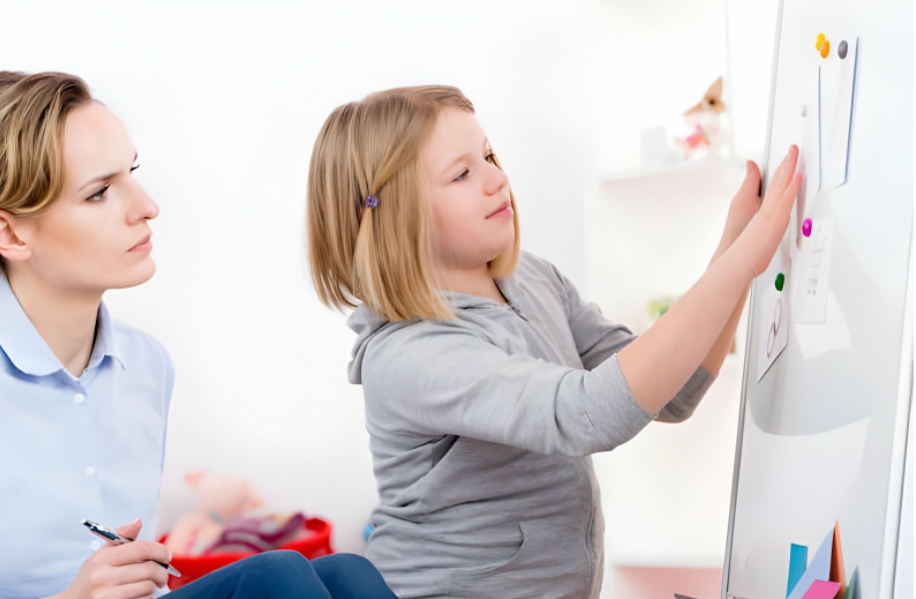Prepositions might seem like small words, but mastering them is a big deal for children learning language. These little words, such as “in,” “on,” “under,” and “beside,” help provide crucial details about the relationship between objects and their surroundings.
For children receiving speech therapy, grasping prepositions can be challenging, but with creative and engaging activities, learning becomes fun and effective.
In this article, we’ll explore various speech therapy activities for prepositions, designed to teach children in imaginative ways. Prepositions might seem like small words, but mastering them is a big deal for children learning language.
1. Treasure Hunt:
Transform preposition practice into an exciting treasure hunt adventure! Hide objects around the room or outdoors and provide clues that incorporate prepositions.
For example, “The treasure is under the chair” or “Look beside the tree.” Children will have a blast searching for hidden treasures while internalizing prepositions effortlessly.
2. Sensory Bins:
Create sensory bins filled with different materials such as rice, sand, or beans. Hide objects within the bins and encourage children to describe their location using prepositions.
They can say things like, “The toy car is buried under the rice” or “I found the rubber duck between the beans.” This hands-on activity engages multiple senses and reinforces prepositional understanding.
3. Story Sequencing:
Develop a narrative-rich activity where children arrange picture cards depicting a sequence of events. As they place the cards in order, they can describe the spatial relationships using prepositions.
For instance, “First, the cat jumped onto the table, then it climbed under the blanket.” Story sequencing enhances language comprehension and sequencing skills alongside preposition practice.
4. Obstacle Courses:
Set up an obstacle course with various objects placed strategically. Guide children through the course, instructing them to navigate using prepositions like “over,” “under,” “around,” and “through.”
This dynamic activity promotes physical movement while reinforcing spatial concepts in a playful manner.
5. Puppet Play:
Utilize puppets to act out scenarios that involve prepositions. Children can manipulate the puppets to demonstrate concepts like “next to,” “behind,” and “inside.”
Encourage them to narrate the actions using prepositional phrases, fostering both verbal and nonverbal communication skills.
6. Build-a-Scene:
Provide a variety of props and materials for children to construct scenes depicting different locations. They can build a park with swings, a house with furniture, or a farm with animals.
Prompt them to describe where each element is situated using prepositions. This activity encourages creativity while reinforcing prepositional vocabulary.
7. Simon Says:
Play a classic game of Simon Says with a prepositional twist! Give commands that involve spatial movements such as “Simon says stand beside the chair” or “Simon says hop over the rope.”
This game enhances listening skills and encourages children to follow instructions while internalizing prepositions naturally.
8. Barrier Games:
Engage in barrier games where children sit across from each other with a barrier (e.g., a folder) between them. Each child has a set of objects, and they take turns giving instructions to arrange the objects according to specific prepositions.
For example, “Put the teddy bear under the cup” or “Place the toy car between the book and the block.” Barrier games promote turn-taking, communication, and prepositional understanding.
9. Interactive Books:
Explore interactive books that feature lift-the-flap or pull-tab elements showcasing prepositional concepts.
These books provide a hands-on approach to learning prepositions and encourage children to actively engage with the content while enjoying a multi-sensory experience.
10. Scavenger Hunts:
Organize scavenger hunts where children search for objects based on prepositional clues. Provide them with a list of instructions such as “Find something above your head” or “Locate something behind the couch.”
Scavenger hunts promote independent exploration and reinforce prepositional vocabulary in real-world contexts.
Conclusion
In conclusion, teaching prepositions to children in speech therapy can be both educational and enjoyable with the right activities. By incorporating creative and interactive methods such as treasure hunts, sensory bins, puppet play, and obstacle courses, therapists can make learning prepositions a stimulating and rewarding experience for children.
These activities not only enhance language skills but also foster creativity, problem-solving, and social interaction. So, let’s make learning prepositions an adventure filled with fun and discovery!




